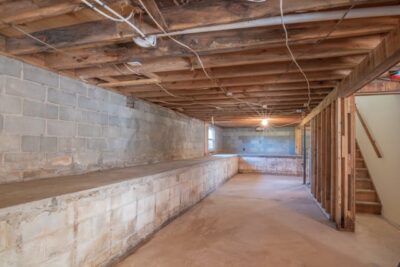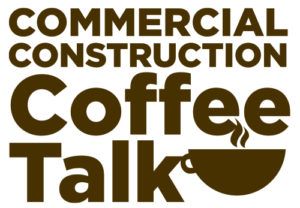Ever feel like your home is shrinking? One day, everything fits just fine. The next, you’re shoving things into closets, stacking boxes in corners, and wondering if your garage will ever see a car again. If it feels like space is disappearing, you’re not alone.
With housing costs rising and new home sizes shrinking, more people are looking for creative ways to make the most of what they have. In cities where real estate is expensive, homeowners are learning to rethink their layouts instead of moving to bigger spaces. Even in suburban homes, storage and functionality are becoming priorities as families grow and needs change.
The truth is, extra space is hiding in your home—you just have to know where to look.
In this blog, we will share clever ways to uncover hidden space in your home, how to make it work for your lifestyle, and why a little creativity can go a long way.
Bringing Forgotten Spaces to Life
Once you’ve identified areas that could be better used, it’s time to get creative. The trick isn’t just finding space—it’s making sure that space actually works for you.
1. The Basement’s True Potential
If your basement is unfinished or used only for storage, you’re sitting on valuable real estate. A thoughtful basement design can create an entirely new space without expanding your home’s footprint.
Popular basement transformations include:
- A second living room or entertainment space – Great for families who need more room to relax.
- A home gym – With gym memberships rising in cost, having a personal workout area is a smart move.
- A rental unit or guest suite – Many homeowners are turning basements into income-generating apartments.
Since basements tend to have lower ceilings and limited natural light, smart lighting choices, bright colors, and strategic layout planning are key to making them feel welcoming.
2. Multi-Use Areas
With remote work and flexible lifestyles becoming more common, homes need to serve multiple purposes. Spaces that once had a single function can now do more.
- A guest room can double as a home office with a pull-out sofa or Murphy bed.
- A living room corner can become a reading nook with a comfortable chair and built-in shelving.
- A kitchen island can serve as both a prep space and a homework station for kids.
By thinking about how your home actually gets used, you can design spaces that shift to meet your needs over time.
3. Going Vertical
Many people focus on floor space, but walls hold untapped potential.
- Floating shelves can replace bulky bookcases.
- Tall cabinets in kitchens and closets maximize storage.
- Lofted beds in kids’ rooms create extra play or desk space underneath.
Using vertical space is one of the easiest ways to add function without taking up more room.
Why More People Are Reimagining Their Homes
The way we live in our homes has changed. Over the past few years, more people have spent time at home than ever before. Remote work, homeschooling, and multi-generational living have made space a top priority.
Real estate prices aren’t getting any cheaper, either. Expanding a home is costly, and moving to a larger house isn’t always realistic. That’s why homeowners are getting smarter about using what they have.
A few key trends driving this shift:
- Rising housing costs: More people are staying in their current homes longer and optimizing space instead of moving. With home prices and mortgage rates rising, buying a larger house isn’t always an option. Homeowners are choosing to renovate, reorganize, and repurpose rather than take on new financial burdens. Finding creative ways to maximize space is now a necessity rather than a luxury.
- Sustainability and minimalism: Decluttering and making homes more functional without adding more square footage. As people become more environmentally conscious, reducing waste and consuming less is a growing priority. A well-organized home not only feels more spacious but also reduces the need for excessive buying. Thoughtful design choices, like multi-use furniture and energy-efficient upgrades, help homeowners create a functional yet sustainable living space.
- Aging in place: Families are adapting spaces for long-term living, ensuring their homes remain practical as they grow older. Many homeowners are making accessibility-focused upgrades like wider doorways, step-free showers, and first-floor living spaces. These changes allow people to stay in their homes comfortably rather than relocating to assisted living. Future-proofing a home ensures it remains safe and functional through all stages of life.
By rethinking your home’s potential, you’re not just creating more space—you’re making your home work better for you now and in the future.
Rethinking Storage: Making Every Inch Count
When space feels tight, storage is often the biggest challenge. But getting organized doesn’t just mean buying more bins and shelves—it means rethinking how and where you store things.
Instead of stuffing closets or piling items in the garage, consider these smart storage strategies:
- Built-in storage solutions – Under-bed drawers, stairway cabinets, and hidden compartments can add space without cluttering rooms.
- Convertible furniture – Ottomans with storage, fold-out desks, and beds with shelving offer function without taking up extra space.
- Hidden storage spaces – The area above doorways, the backs of cabinets, and even unused attic sections can be repurposed for extra storage.
In small homes, storage should be intentional. Every inch counts, and a well-thought-out system can turn a cramped space into one that feels open and organized.
By making smart storage a priority, homeowners can clear out clutter and make room for what really matters—without feeling like they need a bigger house.
All in all, most homes have more space than we realize—it’s just hidden in unused corners, overlooked rooms, and underutilized basements. Instead of assuming your home is too small, look at what’s already there. With a little creativity, smart planning, and thoughtful design, you can unlock new possibilities without ever adding a single square foot.
A well-designed home isn’t about having more space—it’s about using space better. So, the next time you feel like your house is getting smaller, ask yourself: Where is the space I haven’t seen yet? The answer might be right in front of you.


























